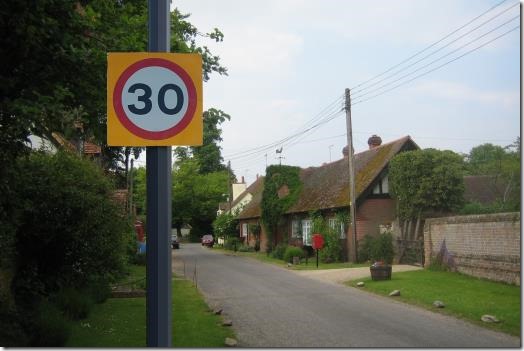When leaving a village or entering a village how do i know what speed to go on a motorbike?
Someone came to the blog via that exact search term! Is it any wonder the country is in such a mess as far as driver attitudes go?
Diary of an ADI doesn’t even appear in the first 20 pages on Google for that term (that was where I gave up), so you have to admire the tenacity of whoever it was in their quest to find the answer.
In the UK, we have this little booklet, which is known as “The Highway Code”. Somewhere at the back are some pictures of things called “road signs”, and it is the usual custom to affix them to lampposts or other upright structures in order to inform road users of trivial details like imminent hazards and speed limits.
The little booklet is aimed at all road users.
To be honest, I was rather surprised that a motorcyclist should ask this, since most of them treat speed limits as advisory guidance, i.e. the speed to go at if there is a speed camera present.
So, to answer the question: as you enter the village there is most likely a round sign like the one shown above with “30” written on it. The “30” translates to the number “thirty”, and it refers to the number of miles per hour you are not allowed to exceed. If you look at those dials on your handlebars you might notice that one of them also has a “30” on it (it’s right near the bottom, so you may not have noticed it before), and this is your “miles per hour” dial. The little pointy thing that moves when you accelerate or decelerate should be on or below that as you enter the village, and it should not go above at any point.
When you leave the village, the chances are that you will see another sign. This one is harder to understand because it doesn’t have anything written on it, but instead consists of a white circle with a black diagonal stripe. It means that the national speed limit (NSL) applies, and this is “60” (or sixty) miles per hour on single carriageway roads, and “70” (or seventy) miles per hour on dual carriageways. A “dual carriageway” is a big road with a solid barrier between your side and the side where traffic is going the opposite way. Look closely and you will notice the dial on your motorcycle also has a “70” on it. It’s a bit higher than the “30”, but still far enough down from the biggest number that you might have previously overlooked it.
If at any point you don’t know what the speed limit is – after all, it is difficult to spot these things when you are trying not to fall off on a corner – then you should assume it is “30” until you do.
Note also that some signs have “20” (twenty), “40” (forty), or “50” (fifty) on them. These numbers also appear on your motorcycle’s dial somewhere. The speed limit in a village isn’t automatically “30” every time (it could be higher or lower), nor does it necessarily go up to NSL (it could be lower) as you leave the village. This is why those little signs are so useful.